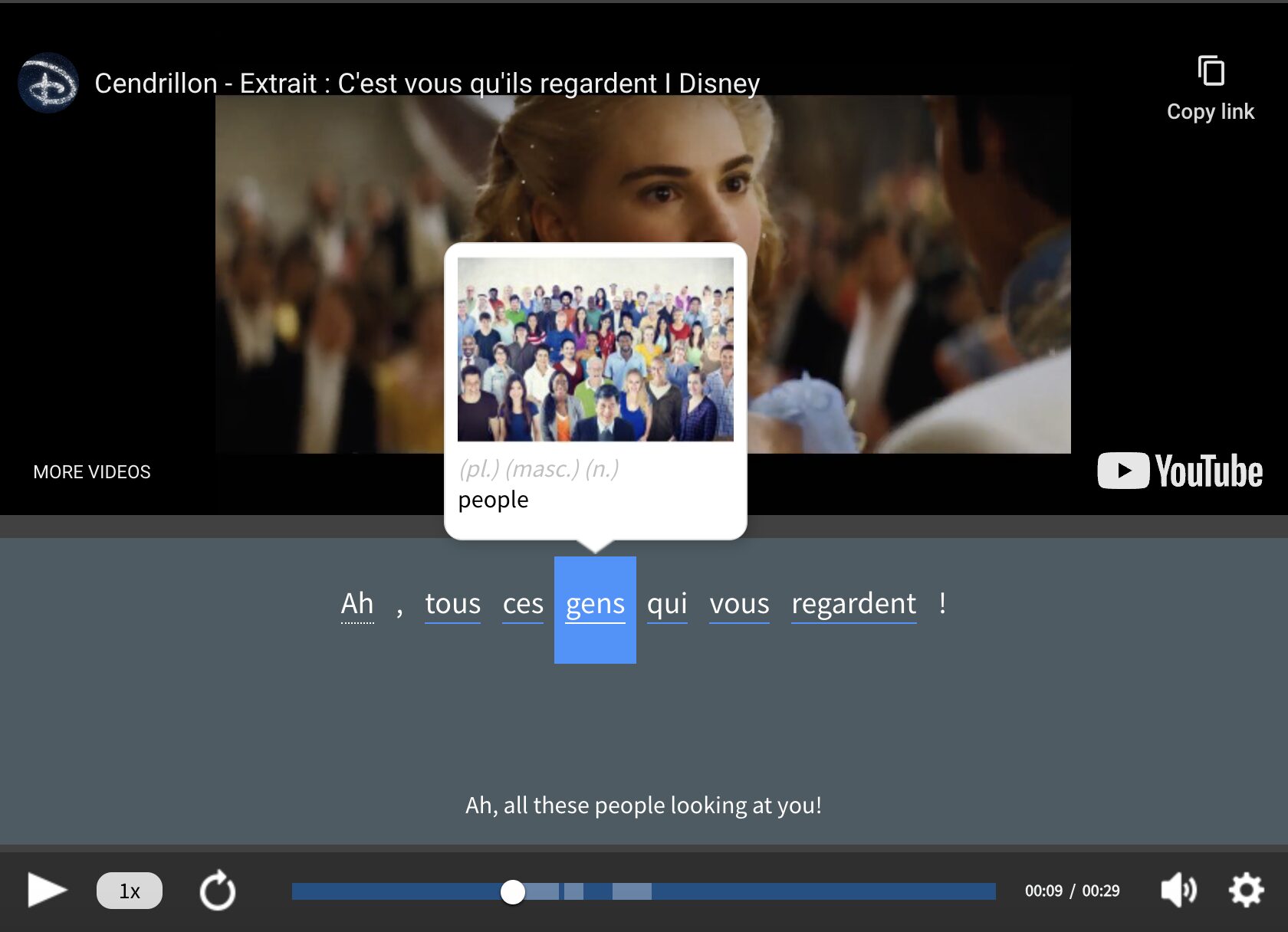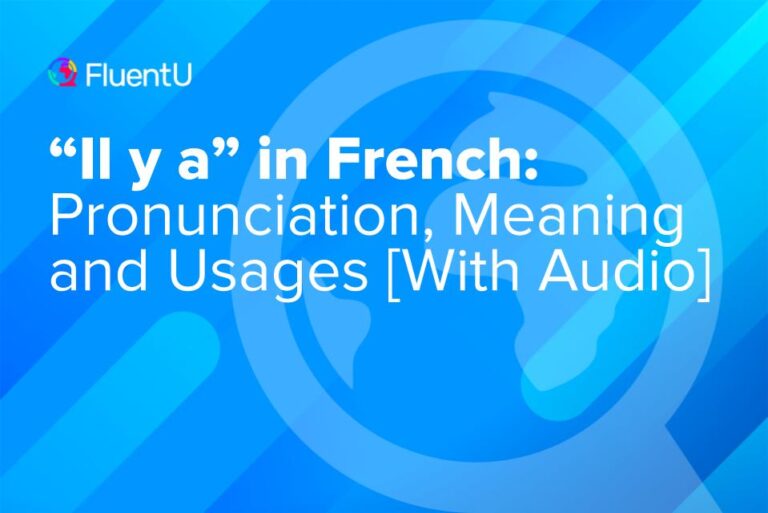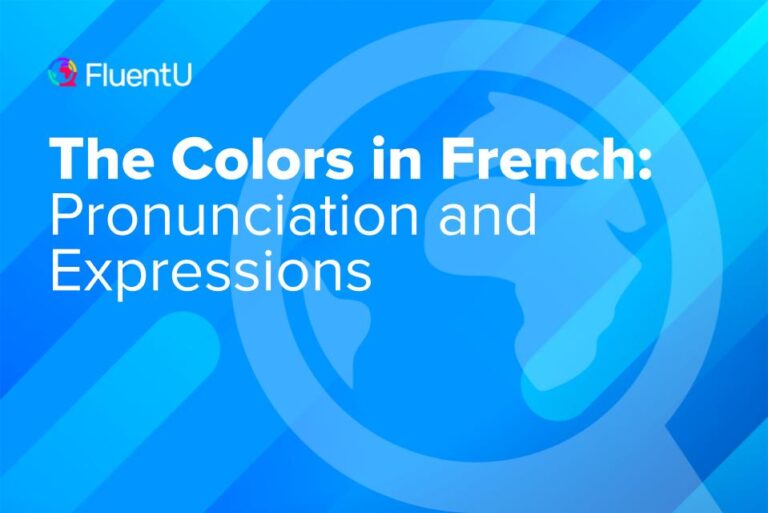29 French-Speaking Countries Around the World
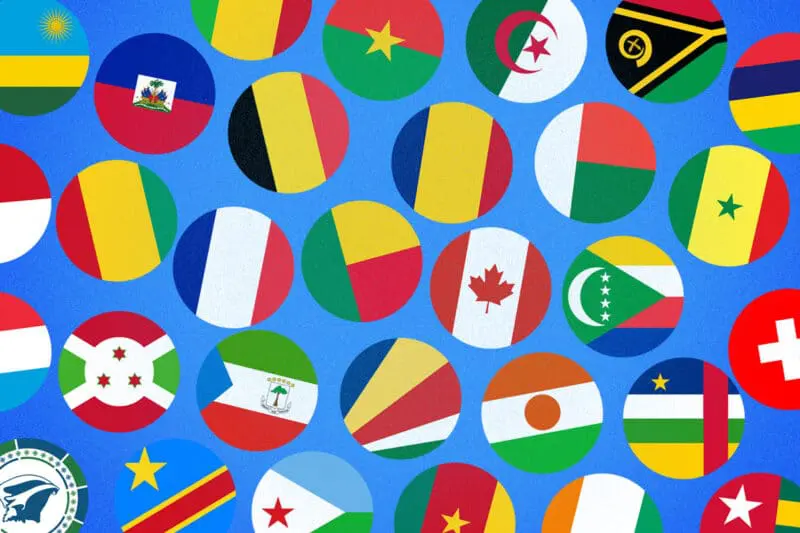
When you think of the French language, odds are your mind immediately goes to the Eiffel Tower, croissants and well-dressed Parisians. However, due to colonial history and worldwide cultural influence, there are now many other French-speaking countries to explore.
We’ll go into the 29 countries around the world that have French as their official language, plus other countries and territories that speak French.
Download: This blog post is available as a convenient and portable PDF that you can take anywhere. Click here to get a copy. (Download)
Which Countries Speak French?
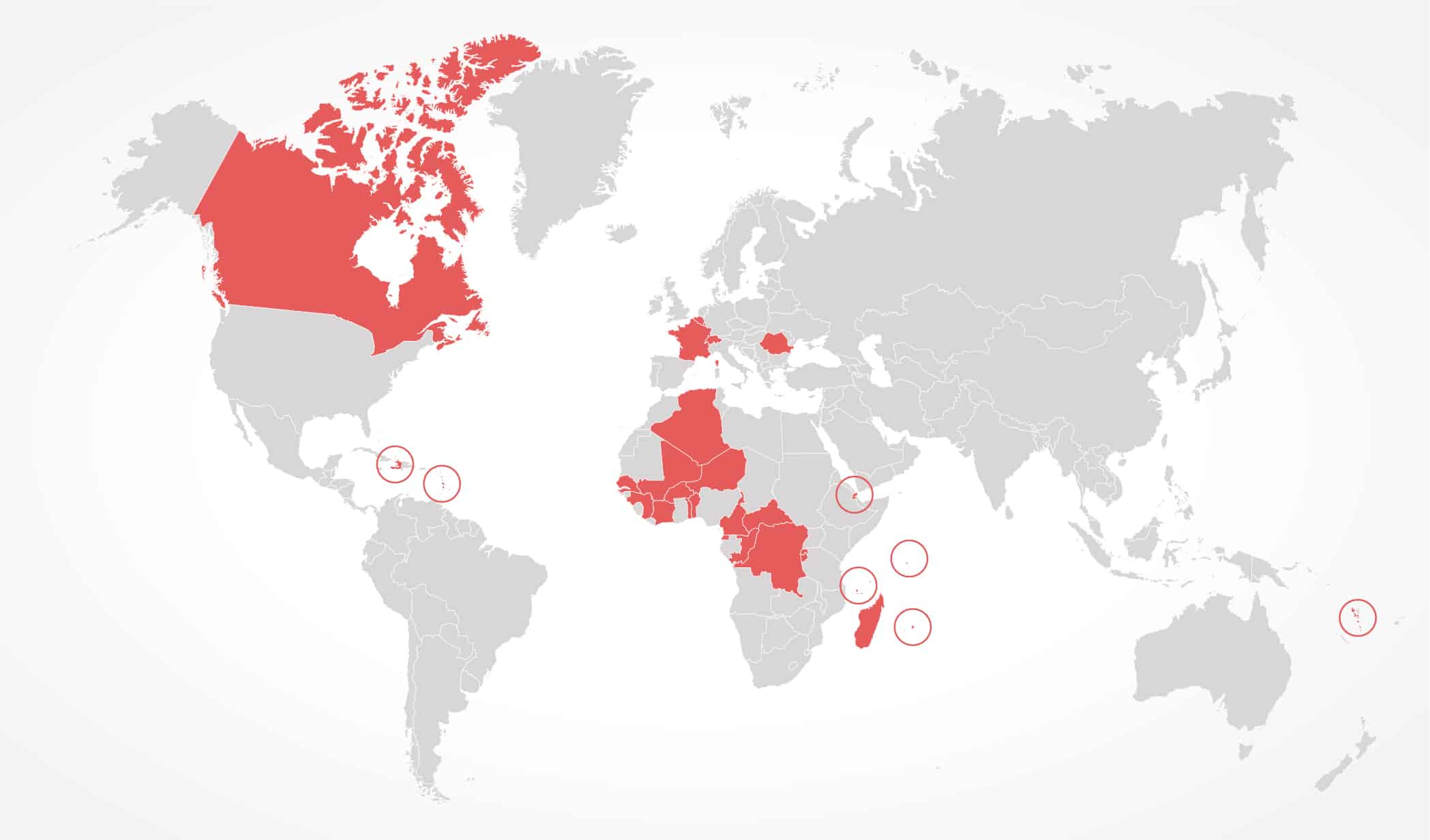
The Organization of International Francophonie creates in-depth reports about the French language presence around the world. For more statistics and numbers, check out their 2022 report.
In a nutshell:
- French is the official language of 29 countries. Plus, there are 11 French overseas territories that have it as their official language as well.
- There are 321 million French speakers worldwide. There are 255 million French native speakers and 66 million who speak it as a second language.
- French is the fifth most spoken language in the world and the fourth most common language on the internet.
- This is the distribution of French speakers around the world: Sub-Saharan Africa and the Indian Ocean (47.2 %), Europe (31.3 %), North Africa and the Middle East (14.6 %), the Americas and Caribbean (6.6 %), Asia and Oceania (0.3 %)
Here’s a breakdown of the countries that speak French.
| Countries with French as Their Official Language | |||
|---|---|---|---|
| France | Burundi | Gabon | Seychelles |
| Belgium | Cameroon | Guinea | Togo |
| Luxembourg | Central African Republic | Madagascar | Canada |
| Monaco | Comoros | Mali | Haiti |
| Switzerland | Côte d’Ivoire | Niger | Vanuatu |
| Chad | Democratic Republic of the Congo | Republic of the Congo | |
| Benin | Djibouti | Rwanda | |
| Burkina Faso | Equatorial Guinea | Senegal | |
| Overseas French Territories with French as an Official Language | |
|---|---|
| French Guiana | Réunion |
| Guadeloupe | Saint Barthélemy |
| Martinique | Saint Martin |
| Mayotte | Saint Pierre and Miquelon |
| Wallis and Futuna | New Caledonia |
| French Polynesia | |
Although they don’t recognize French as their official language, due to French colonial history, many North African countries have a sizable French-speaking population.
| Country | Population | Percentage of French Speakers |
|---|---|---|
| Tunisia | 12 million | 52 % |
| Lebanon | 6.7 million | 38 % |
| Morocco | 37.8 million | 36 % |
| Algeria | 45.3 million | 33 % |
Let’s have a closer look at the countries that have French as an official or co-official language.
French-Speaking Countries in Europe
1. France
Population: 68.5 million
French speakers: 66.3 million (97 % of population)
Here we have where it all started: France. The French language spoken in France originated from a form of Latin spoken in Gaul.
French is a part of the romantic language family, so it shares many characteristics with Spanish, Italian, Romanian and Portuguese.
Due to colonialism and global influence, French has now spread from France to all corners of the Earth, primarily in Africa.
2. Belgium
Population: 11.6 million
French speakers: 8.8 million (76 % of population)
As with many of the other French-speaking countries on this list, Belgian French is only a step away from Standard French.
As a country with two official Germanic languages (Dutch and German) alongside French, it’s no wonder a few things crept into the French dialect from Dutch, such as Kom je mee? (Are you coming?)
Being on the lookout for an odd Germanic construct can be helpful when deciding how something should be expressed in Standard French.
3. Luxembourg
Population: 639,000
French speakers: 626,000 (92 % of population)
This country may be small (998 square miles to be exact), but its citizens are incredibly multilingual, with the majority being able to speak four languages.
This is clearly a priority for Luxembourg as students are taught three languages throughout their schooling.
The official languages of Luxembourg are Luxembourgish, French and German although many other European languages are commonly spoken.
4. Monaco
Population: 40,000
French speakers: 39,000 (97 % of population)
This micro-state is incredibly unique. It is essentially completely surrounded by France, yet maintains sovereignty.
Since it’s surrounded by France, it only makes sense that French is Monaco’s official language. However, French is actually not the only language spoken in this tiny country.
The luxurious lifestyle of Monaco draws people from all over the world, so you will also hear a lot of English, various Italian dialects and other foreign languages.
5. Switzerland
Population: 8.7 million
French speakers: 5.7 million (67 % of population)
Switzerland is a unique country that features four official languages: French, German, Italian and Romansh. German and French are the dominant languages.
Most of this linguistic diversity can be attributed to the geography of the country. The country’s Eastern borders touch Austria and Germany, so that region mostly speaks German.
On the Western side, Switzerland borders France, so experiences more French influence in that region. There are also smaller regions that speak Italian (of course they’re close to the Southern border that is next to Italy).
French-Speaking Countries in Africa
6. Benin
Population: 12.7 million
French speakers: 4.3 million (34 % of population)
An African country affected by French colonialism, Benin boasts a wide linguistic diversity with 68 different languages being spoken.
French is the official language and is used for administrative functions, but Fon is the most widely spoken. Yom and Yoruba are also widely spoken, sharing national language status with Fon.
Most people in Benin speak more than one language, so French is used as a lingua franca, or a common language that different groups use to communicate.
7. Burkina Faso
Population: 22.1 million
French speakers: 5.4 million (24 % of population)
Burkina Faso was a part of French West Africa from 1896 to 1960. Following French colonial rule, French remained as the official language.
Despite French being the official language used for legislature, the press and other public services, Burkina Faso has about 60 indigenous languages that are spoken.
The most widely used of the indigenous languages is Mooré, which is spoken by over 50 % of the population. Overall, French may be official in Burkina Faso, but it’s not the most used.
8. Burundi
Population: 12.6 million
French speakers: 1 million (9 % of population)
Burundi was actually under Belgian rule, not French, but they did pick up Belgian French in the colonial era and kept it as an official language alongside English and Kirundi.
Although French and English are official, Kirundi is the main language that is used by the country’s natives. In fact, less than 10 % of the population is actually fluent in French.
The fact that there’s only one main indigenous language speaks to the way that Burundi is attempting to unite its people.
9. Cameroon
Population: 27.9 million
French speakers: 11.4 million (41 % of population)
Unlike some of the other countries on this list, French is an official language and is widespread. English is also official and widespread, although not as common as French.
Cameroon’s government strives for bilingualism, but this has yet to be achieved as very little of Cameroon’s population is fluent in French and English.
There are still hundreds of indigenous languages spoken in Cameroon, but Cameroonians have a higher level of understanding of French than some other African francophone countries.
10. Central African Republic
Population: 5 million
French speakers: 1.4 million (29 % of population)
The two biggest languages in the CAR are French and Sango, which are both official languages and the most widespread.
Despite French being official and widely spoken relative to some 70 unofficial languages, it is not nearly as common as Sango, which is spoken by 4.4 million people.
French ends up being used mostly in writing and for formal situations, but Sango is by far the most commonly spoken day to day.
11. Chad
Population: 17 million
French speakers: 2.2 million (13 % of population)
French’s influence in Chad stems from colonialism as well. After gaining independence in 1960, French remained the official language, coexisting with over 100 indigenous languages.
Fluency in French is linked to socioeconomic advancement, but Chad’s government recognizes and promotes linguistic diversity alongside French.
Today, French maintains its significance in governance, education and commerce, reflecting Chad’s complex linguistic landscape shaped by historical and contemporary factors.
12. Comoros
Population: 907,000
French speakers: 237,000 (26 % of population)
Comoros is a tiny island off the East coast of Africa that has three official languages: Comorian, French and Arabic.
Comorian is the most widely spoken language, but French is the second most used, although only about 26 % of the population is fluent.
Arabic is actually not too widely known in Comoros, but since the country is mostly Islam, the language was given official status. You can also find a few people that speak Swahili or Malagasay as well.
13. Côte d’Ivoire
https://www.youtube.com/watch?v=i88Oo4Jr4XU&ab_channel=TwoSisters
Population: 27.7 million
French speakers: 9.3 million (34 % of population)
Due to its French colonial legacy evident from the country’s name, the Côte d’Ivoire (Ivory Coast) maintains French as an official language.
Despite the fact that only about 34 % of the population speaks French, it is the only language with official status.
Other than French, this country has about 77 other languages in use with the indigenous dialects originating from the Niger-Congo language family.
14. Democratic Republic of the Congo
Population: 95.2 million
French speakers: 48.9 million (51 % of population)
This extremely linguistically diverse country has over 240 languages that are spoken in the area.
Despite having so many languages spoken, French is the only official language. Kikongo, Lingala, Swahili and Tshiluba are considered national languages.
The Democratic Republic of the Congo was a Belgian colony, and today over 51 % of the population speaks French.
15. Djibouti
Population: 1 million
French speakers: 508,000 (50 % of population)
Djibouti has French and Arabic as official languages, but Somali and Afar are the most used languages in this small country. Islam is the predominant religion of the state, so that is why Arabic has its official status.
Djibouti was once part of the French Somaliland from 1896 to 1967. After a French referendum, the area was renamed the French Territory of the Afars and the Issas.
This territory remained until 1977 when the people voted to separate from France and finally became the sovereign state of Djibouti.
16. Equatorial Guinea
Population: 1.5 million
French speakers: 433,000 (29 % of population)
This small West African country was actually a Spanish colony that gained its independence in 1968.
Although it didn’t have direct French influence, Equatorial Guinea adopted French as an official language in 1988 in order to build better relationships with francophone countries.
This was mostly an economic and political move, so it’s spoken by less than 10 % of the population. Spanish is the main language spoken alongside Portuguese and various indigenous languages.
17. Gabon
Population: 2.3 million
French Speakers: 1.5 million (65 % of population)
Gabon is a country in Western Africa was a colony of France from 1885 to 1960, after which it became independent.
French is Gabon’s official language and it’s spoken by a majority of the population. It’s also the main language used in schools.
Aside from French, indigenous Bantu languages such as Fang and Eshira are also widely spoken in Gabon.
18. Guinea
Population: 13.8 million
French speakers: 3.8 million (27 % of population)
Guinea has 22 major languages, with French being the only official language. Although it’s official, French is usually used only as a second language after the indigenous languages.
The indigenous languages Pular, Maninka, Susu, Kissi, Kpelle and Toma have national language status. Pular is the most widely spoken of the indigenous languages.
19. Madagascar
Population: 29.1 million
French speakers: 7.7 million (26 % of population)
Madagascar has two official languages: Malagasay and French. Despite the fact that Madagascar was a French colony until 1960, the language is only spoken by about a fifth of those who live there.
Malagasay is definitely the most widely spoken language in Madagascar, but you can also find quite a few English, Arabic and Chinese speakers as well.
20. Mali
Population: 21.4 million
French speakers: 3.7 million (17 % of population)
French is the only official language of this West African country, but only about 17 % of the population actually speak it.
The indigenous language Bambara is by far the most widely spoken language in Mali, with over half of the population being able to speak it.
There are also over 70 other indigenous languages present in Mali.
21. Niger
Population: 26 million
French speakers: 3.3 million (13 % of population)
Niger achieved independence from France in 1960. The official languages of Niger are French and Arabic, yet most of the people of Niger speak Hausa.
French is mostly only spoken by people who receive an education and is used for official public use such as media, business and government.
There are also many other indigenous languages that are used in Niger.
22. Republic of the Congo
Population: 5.7 million
French speakers: 3.5 million (61 % of population)
This highly urbanized country is very linguistically diverse, with over 60 languages being spoken.
French is the Republic of the Congo’s official language, while the indigenous languages Kituba and Lingala hold national language status.
Since most of the population lives in the cities, it only makes sense that this is where you will find the majority of French speakers.
23. Rwanda
Population: 13.6 million
French speakers: 793,000 (6 % of population)
Rwanda has four official languages: French, English, Swahili and Kinyarwanda. French came from Rwanda’s time as a Belgian colony in the twentieth century.
Kinyarwanda is the most widely spoken language in Rwanda, as it’s the first language of most who live there.
In 2008, the language of education switched from French to English. Since then, English has become the more dominant foreign language, although many educated Rwandans speak French.
24. Senegal
Population: 17.6 million
French speakers: 4.6 million (26 % of population)
There are over 30 different languages that are spoken in Senegal. French may be the official language of this country, but it is certainly not the only one or even the most widely spoken.
In fact, only about 26 % of the population speaks French and it’s hardly ever the first language. About 50 % of the population actually speaks Wolof as their first language.
The indigenous languages Wolof, Serer, Pular, Mandinka, Soninke and Jola-fony hold national language status in Senegal.
25. Seychelles
Population: 99,000
French speakers: 53,000 (53 % of population)
Seychelles is an archipelago of islands in the Indian Ocean and was actually a British colony until 1976.
Despite being an English colony, the most widely spoken language in this country is Creole, which is heavily influenced by French, although it contains English elements as well.
French, English and Creole are all official languages, but French isn’t actually used all that much.
26. Togo
Population: 8.6 million
French speakers: 3.5 million (41 % of population)
This West African country was once a French and British colony (the land was split between the two). Eventually, the French region of former Togoland gained independence in 1960.
Since then, Togo has kept French as an official language, although it’s really only used for government functions and some businesses.
National languages include the indigenous languages Ewé and Kabiyé.
French-Speaking Countries in North America
27. Canada
Population: 38.6 million
French speakers: 11 million (29 % of population)
French Canadian dialects are actually closer to the version of the language spoken in France during the 17th and 18th centuries.
The noticeable differences in grammar, syntax and pronunciation give the Canadian French a beautifully archaic aspect.
If you’ve only listened to Parisian French, it will likely sound kind of strange at first. But, after you’ve adjusted to it, you may develop a greater love for Canadian French.
28. Haiti
Population: 11.6 million
French speakers: 4.9 million (42 % of population)
Haiti was initially a part of the Spanish colony Hispaniola, but was eventually annexed by the French. Almost the entire population of Haiti consisted of slaves brought from Africa to work on the plantations on the island.
Eventually, the slaves led a revolt against the French and claimed independence in 1804, making Haiti the world’s oldest black republic.
French and Haitian Creole are the official languages of Haiti, though most Haitians only speak Creole. Creole is mostly French, with influence from several other languages that make it unique.
French-Speaking Countries in Oceania
29. Vanuatu
Population: 322,000
French speakers: 100,000 (31 % of population)
Vanuatu has three official languages: French, English and Bislama. Bislama is a form of pidgin English and is used the most by locals in day-to-day life.
English is used a lot in the tourism sector and French is used in some businesses. Even though French and English are official languages, they’re relatively low on Vanuatu’s linguistic hierarchy.
Most people from Vanuatu will speak an indigenous language first, with Bislama as a second language and French or English as a third language.
Why Are There So Many French-Speaking Countries?
In the 10th century, French began to assert its linguistic identity. During the Middle Ages, it became the language of the courts and aristocracy.
In the 17th century, it attained its standardized form through the efforts of writers like François Rabelais and Pierre de Ronsard. French was so influential that it was considered the international lingua franca before English.
From the 16th to the 19th centuries, France was a major world power, seizing many territories across the continents and introducing French to the native people.
English would eventually replace French as the main global language, but many of these countries still have French as their official language, which is why French is spoken in so many places today!
If you’re interested in an in-depth history of the French language, check out our video below.
To hear how French is used in France and other countries, you can check out FluentU, which combines French native videos with language learning tools.
FluentU takes authentic videos—like music videos, movie trailers, news and inspiring talks—and turns them into personalized language learning lessons.
You can try FluentU for free for 2 weeks. Check out the website or download the iOS app or Android app.
P.S. Click here to take advantage of our current sale! (Expires at the end of this month.)
As with any other influential language, French has grown and developed uniquely in different areas of the world.
Exploring French-speaking countries other than France can really supercharge your French language skills!
Download: This blog post is available as a convenient and portable PDF that you can take anywhere. Click here to get a copy. (Download)
And One More Thing...
If you like learning French at your own pace and from the comfort of your device, I have to tell you about FluentU.
FluentU makes it easier (and way more fun) to learn French by making real content like movies and series accessible to learners. You can check out FluentU's curated video library, or bring our learning tools directly to Netflix or YouTube with the FluentU Chrome extension.
One of the features I find most helpful is the interactive captions—you can tap on any word to see its meaning, an image, pronunciation, and other examples from different contexts. It’s a great way to pick up French vocab without having to pause and look things up separately.
FluentU also helps reinforce what you’ve learned with personalized quizzes. You can swipe through extra examples and complete engaging exercises that adapt to your progress. You'll get extra practice with the words you find more challenging and even be reminded you when it’s time to review!
You can use FluentU on your computer, tablet, or phone with our app for Apple or Android devices. Click here to take advantage of our current sale! (Expires at the end of this month.)


